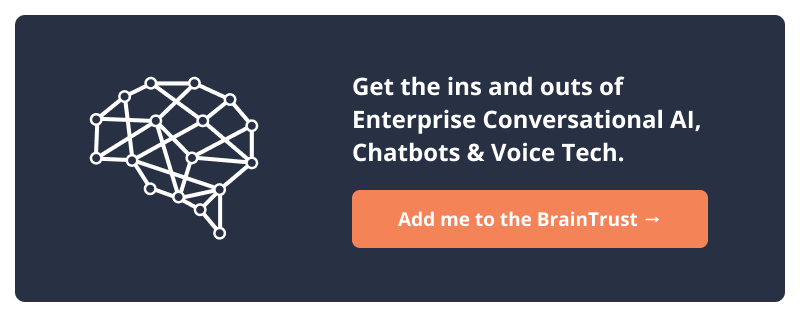Starting a new Conversational AI project for your enterprise can be daunting. With stakeholder expectations, limited budget and a general lack of enterprise Conversational AI experts around, executing a successful project is easier said than done.
To help guide your project, we’ve asked for some advice from Conversational AI SMEs who have executed and succeeded before. Here were their top tips.
1. Know what Good Execution looks like
Any good project manager knows that a successful project isn’t determined simply by completion. Many factors can contribute to it being unsuccessful, but we’re going to focus on those that are particularly harmful to Conversational AI projects – factors that affect its scalability and adoption across all business units of the enterprise.
Why are these factors important?
Good conversational AI projects should prepare for breadth across business functions and depth into their data systems. To ensure this can happen in the long term, factors like stakeholder relationships and not burning customers are of particular importance.
Failure to satisfy these factors can be detrimental to the long term success particularly for a Conversation AI project, since scalability and cross-functional operability allow for the full benefits of the AI to be realized.
Find out what good execution look like in Conversational AI projects, and stick to it. Or drop us a message to get some tips!
Related: Building an Enterprise Voice Assistant MVP: Wins, Losses and Lessons
2. Conversational Design is not what you think

People tend to think that anyone can design the conversations that go into a conversational AI. After all, everyone converses with people on a daily basis, surely anyone can handle conversation design? Highly mistaken.
Just because people look at websites everyday, it doesn’t mean they’re any good at designing them.
Conversational Design is in fact much more complex. It’s a mixture of several disciplines, including linguistics, UX design, visual design, copywriting, and when applied to Voice projects, voice and audio design (including audio-icons and voice actors). The job of a conversational designer should be likened to that of an architect who designs not just the interaction in natural language, but one who orchestrates the flow, the capabilities and the visual interface into a seamless and enjoyable user experience.
Many organisations starting out with Voice or Chatbots are finding the increased challenges with the management of their NLP. In our experience, many of these NLP issues can actually be resolved simply with better conversational design.
Conversational design is paramount to early adoption and customer satisfaction. Definitely not a factor to be considered as an afterthought.
3. Define Outcomes and KPIs upfront

Define what you’re trying to achieve upfront.
This may seem like a no-brainer, but so many forget that I must mention it.
Sadly, I find many organisations struggling with a chatbot or voice solution that is hardly providing any real benefit after sinking in more funds than is needed. It’s often the result of not defining the outcomes they want to achieve, the KPIs to get there from the beginning, and planning a roadmap to maturing their product offerings. When outcomes and KPIs are defined early on, it’s easier to stay on the path of success and quickly realize when it’s not.
Many chabot providers and project teams tend to focus just on the performance of the Chatbot, neglecting other areas of benefits including the more intangible KPIs such as improved staff satisfaction and customer loyalty.
If you find that your solution has strayed, it’s recommended that a performance assessment is conducted by an external Conversational AI consultant. Fresh, unbiased assessment usually provides better ROI remediation solution and provide direction to maturing your product(s).
4. Don’t focus on the Technology

It can be so easy to fall into the trap of going into your voice or chatbot project thinking about constraints like developer requirements, political agendas and vendor technology preferences. These are important considerations to take in, of course. But, the purpose of the Conversational AI project should be front of mind.
Project managers should be mindful that the technology recommended by developers, management and/or vendors is usually not the best solution to serve the purpose of the project.
Work out your requirements, then find the best tool to fulfill them. Start with what technology works for your purposes and the outcomes you want to achieve, then worry about whether it plays well with others. If not, you’re compromising the successes you could’ve achieved with the right technology, to fulfill someone else’s agenda or for their convenience.
